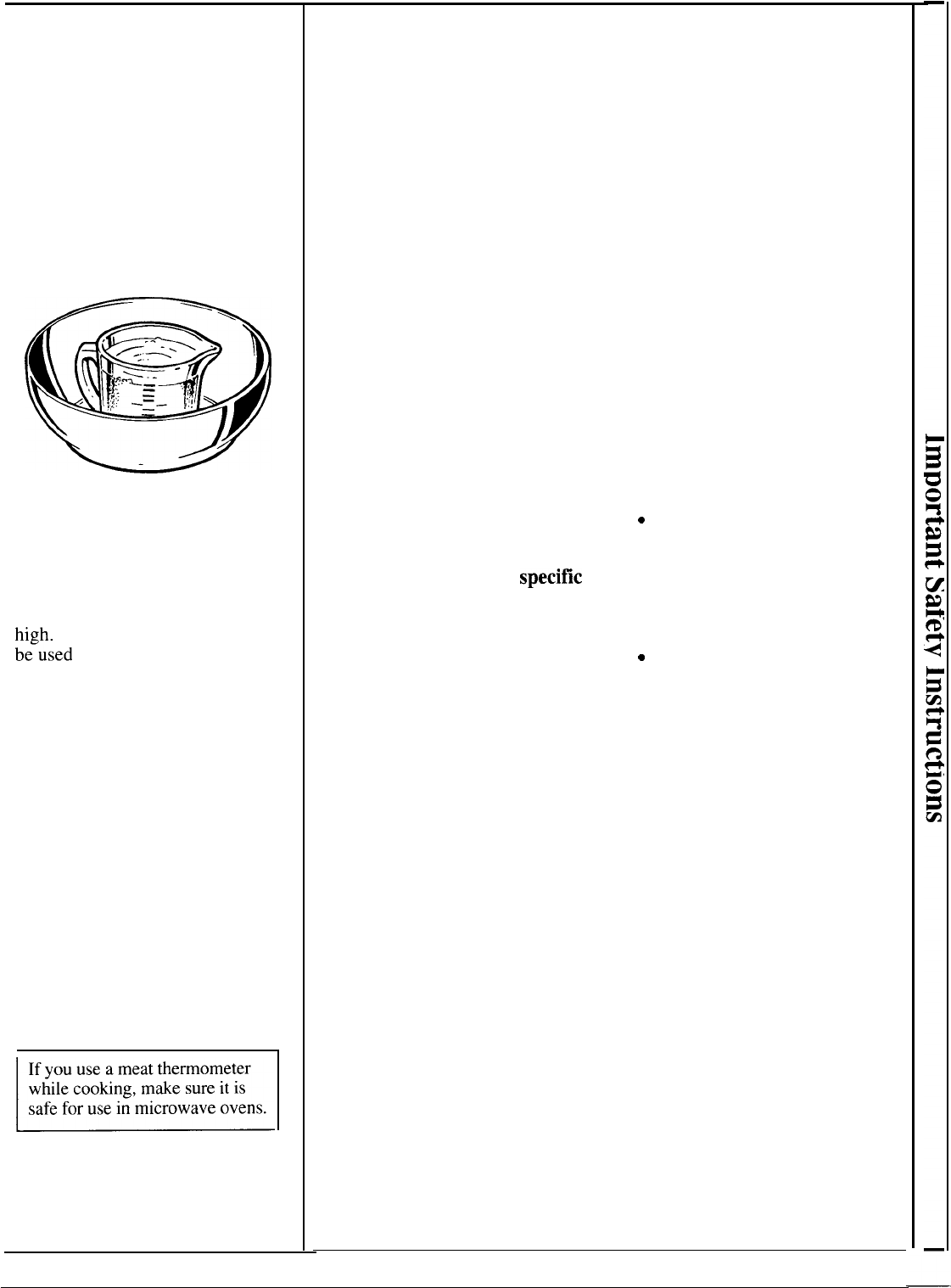
Microwaving Tips
● Make sure all cookware used in
your microwave oven is suitable
for microwaving.
Most glass
casseroles, cooking dishes,
measuring cups, custard cups,
pottery or china dinnerware which
does not have metallic trim or
glaze with a metallic sheen can be
used. Some cookware is labeled
“suitable for microwaving.”
If you are not sure if a dish is
microwave-safe, use this test:
Place in the oven both the dish you
are testing and a glass measuring
cup filled with one cup water—set
the measuring cup either in or next
to the dish. Microwave 1 minute at
high.
If the dish heats. it should not
be”used
for microwaving. If the
dish remains cool and only the
water in the cup heats, then the
dish is microwave-safe.
● Paper towels, waxed paper and
plastic wrap can be used to cover
dishes in order to retain moisture
and prevent spattering. Be sure to
vent plastic wrap so steam can
escape.
●
Some
microwaved foods
require stirring, rotating or
rearranging.
Check cookbook
supplied.
● Steam builds up pressure in
foods which are tightly covered
by a skin or membrane. Pierce
potatoes, egg yolks and chicken
livers to prevent bursting.
E
safe for use in microwave ovens.
IMPORTANT SAFETY
INSTRUCTIONS
Read all instructions before using this appliance.
When using electrical
appliances, basic safety
precautions should be followed,
including the following:
WARNING–TO reduce
the
risk of burns, electric
shock, fire, injury to persons
or exposure to excessive
microwave energy:
●
Use this appliance only for
its intended use as described
in this manual. Do not use
corrosive chemicals or vapors
in this appliance. This
microwave oven is specifically
designed to heat or cook food,
and is not intended for laboratory
or industrial use.
●
Read and follow the
speci~lc
“PRECAUTIONS TO AVOID
POSSIBLE EXPOSURE TO
EXCESSIVE MICROWAVE
ENERGY”
on page 2.
●
This appliance must be
grounded.
Connect only to
properly grounded outlet.
See “GROUNDING
INSTRUCTIONS” on page 21.
●
For best operation, plug
this appliance into its own
electrical outlet,
to prevent
flickering of lights, blowing of
fuse or tripping of circuit breaker.
●
Do not
mount this appliance
over a sink. Install or locate
this appliance
only in
accordance with the provided
Installation Instructions.
● Do not cover or block any
openings on the appliance.
● Do not store this appliance
outdoors. Do not use this
product near water—for
example, in a wet basement,
or near a swimming pool.
● Do not immerse power cord
or plug in water.
● Keep power cord away from
heated surfaces.
● Do not let power cord hang
over edge of table or counter.
● Do not operate this
appliance if it has a damaged
power cord or plug, if it is not
working properly, or if it has
been damaged or dropped.
● See door surface cleaning
instructions in the Care and
Cleaning section(s) of this
book.
“
This appliance should be
serviced only by qualified
service personnel. Contact
nearest authorized service
facility for examination, repair
or adjustment.
c
As with any appliance, close
supervision is necessary when
used by children.
● To reduce the risk of fire in
the oven cavity:
—Remove wire twist-ties from
paper or plastic bags before
placing bags in oven.
—Do
not overcook food.
Carefully attend appliance
if paper, plastic or other
combustible materials are
placed inside the oven to
facilitate cooking.
—Do not use recycled paper
products. Recycled paper
towels, napkins and waxed
paper may cause arcing or
ignite. Paper products
containing nylon or nylon
filaments should be avoided,
as they may also ignite.
(continued next page)
3


















